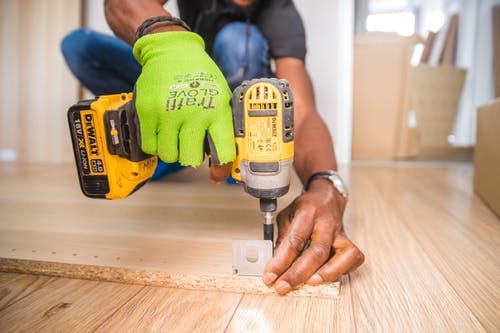What material your cabinets are composed of influences how they appear and how well they will hold up against regular usage. Before acquiring wood cabinets, remember that they might easily warp as the moisture level fluctuates. Before leaving the plant, the wood needs to be finished on both sides. Continue reading to discover more about different cabinet kinds, such as wood cabinet versions.
Materials to Consider Before Building a Kitchen Cabinet Purchase
The color and design of wood cabinets differ depending upon the material. Oak, maple, Hickory, cherry, birch, ash, and pine are all options. Please take a look at our wood cabinets guide listed below to comprehend what makes each material type distinct. Here’s a look at the most widespread ranges of wood cabinets to assist you in integrating style with structural stability.
Red Oak Wood
Red oak is a robust, lasting, low-cost wood for pre assembled cabinets. It can be found in various designs and treatments, has prominent grain patterns, and is usually utilized for timeless cabinet types. This wood is readily available in standard, semi-custom, and bespoke cabinetry.
White Oak Wood
White oak is just as hard as red oak, if not harder. White oak has a more fragile grain and is generally quarter-sawn for bespoke cabinets, particularly for an Arts and Crafts or period visual. Whitewood is typically only provided as a bespoke alternative.
Hard Maple Wood
Tough maple is a fine-grained, light-colored wood that is somewhat more costly than oak but significantly less dense. Maple may be stained, although it is most typically treated with a clear or natural finish to provide a light, modern design.
Hickory Wood
As shown on the island in this kitchen, Hickory is lighter than oak but has a comparable grain pattern and strength. This creamy, light yellow wood may be tinted, but like maple, its golden tones are typically matched by a clear or natural finish. Hickory is an unusual material for bespoke and semi-custom cabinets.
Cherry Wood
Cherry wood kitchen cabinets from companies like Cabinet Solutions Canada are resistant to knocks and spoiling. Cherry’s style flexibility may provide a kitchen area with a contemporary uniqueness while staying elegant and official when used for certain standard layouts. The fine-grained, smooth wood has a reddish-brown tone that darkens with age. This cabinet material is frequently stained to make sure color consistency.
Birchwood
Birch is a hard, fine-grained wood that is rather darker in color than maple. It accepts surfaces perfectly and might pass for a more expensive wood. It may resemble a “phony” cherry or maple. Birch is an affordable wood alternative in stock and semi-custom lines, regardless of its fondness for some irregular coloration.
Ash Wood
Ash has the same strength and resilience as oak but is lighter in color and has a more distinct shape. This straight-grain timber is more contemporary when completed in clear or natural. It is available in semi-custom lines and is typically used in bespoke kitchen cabinetry.
Pinewood
Pine is the only frequently used softwood species for cabinets, and it damages more readily than hardwoods. This light yellow wood, used on the kitchen island and ceiling, might be tinted and has knots that accent classic and rural visual appeals. Eastern and Western white pine may be discovered in a few semi-custom lines.
To End
Aside from the foundation and appliances, selecting the cabinet surface is vital. The surface is not only responsible for the kitchen’s total look; it is likewise a crucial aspect in identifying the durability of the cabinets. There are various solutions available, varying from low-cost to high-end. Determine which one will work best in your home.

